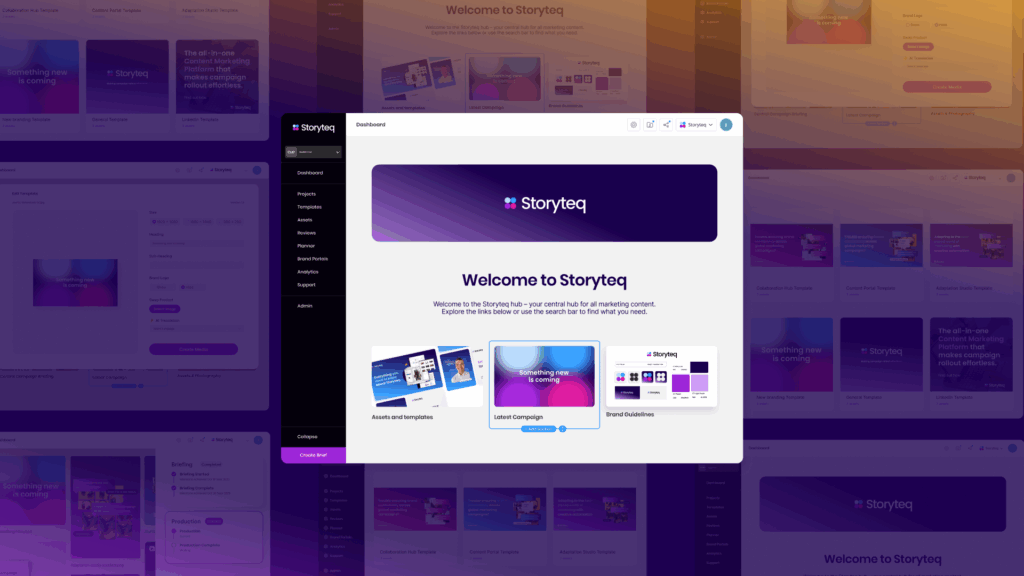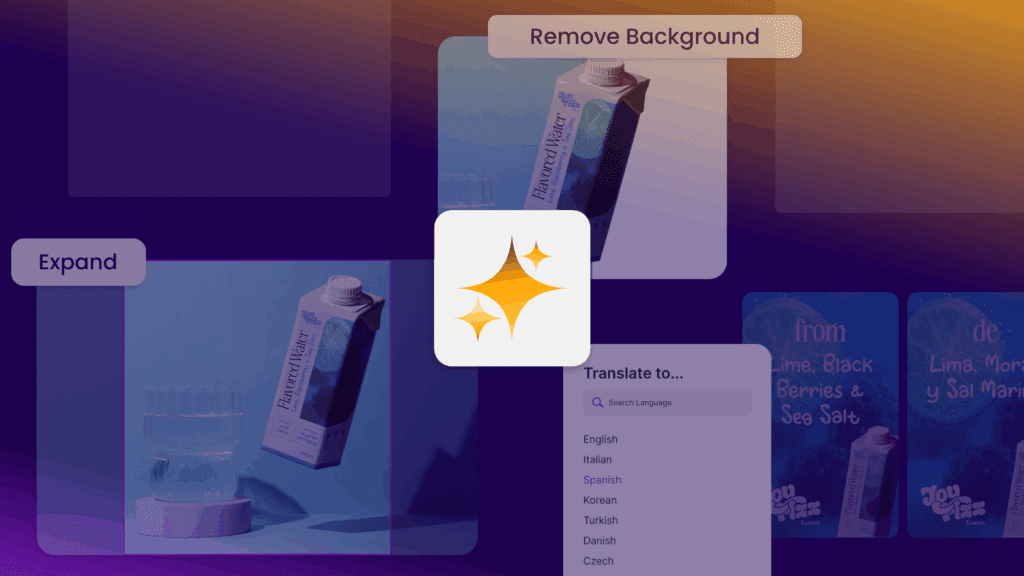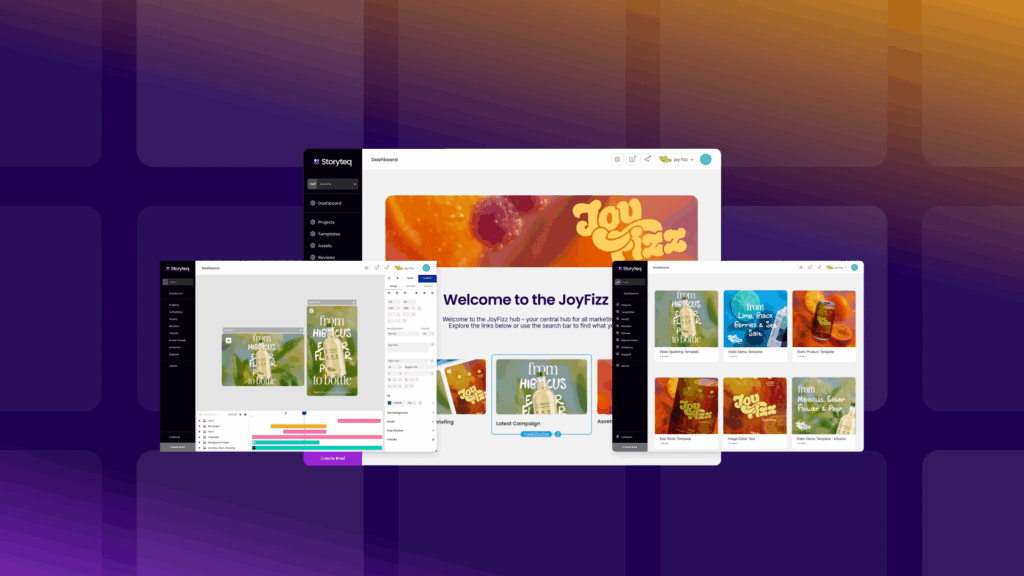What is digital asset management? Essential foundations for marketers
Digital asset management (DAM) is a comprehensive system for storing, organizing, managing, and distributing digital files within an organization. For marketers, it represents the technological foundation that ensures all brand assets—images, videos, logos, documents, and other creative content—are properly catalogued, easily accessible, and consistently used across campaigns.
At its core, a DAM system serves as a centralized repository that transforms chaotic file management into a structured, searchable library. Unlike basic cloud storage solutions, DAM systems include sophisticated metadata frameworks, permission controls, and version tracking capabilities that maintain the integrity of your digital assets throughout their lifecycle.
The basic components of any effective DAM system include:
| Component | Function |
|---|---|
| Asset repository | Securely stores all digital files in a centralised location |
| Metadata architecture | Tags and categorises assets for enhanced searchability |
| Permission settings | Controls who can access, edit, or distribute specific assets |
| Version control | Maintains record of asset iterations and modifications |
| Distribution channels | Facilitates asset sharing across platforms and teams |
Within the broader marketing technology landscape, DAM systems sit at the intersection of content creation, brand management, and campaign execution. They connect with content management systems (CMS), creative tools, and marketing automation platforms to form a cohesive technology ecosystem that supports the entire content lifecycle from conception to distribution.
Why digital asset management is critical for modern marketing success
In today’s digital-first marketing environment, the sheer volume of content required across channels has created unprecedented challenges. Marketing teams without robust DAM solutions often find themselves wasting valuable hours searching for files, recreating lost assets, or navigating approval bottlenecks that delay campaign launches.
Brand asset management becomes particularly challenging when marketing teams expand across regions or when campaigns require localised adaptations. Without a centralised DAM system, maintaining brand consistency becomes nearly impossible as teams create their own interpretations of brand guidelines, leading to fragmented brand experiences for customers.
The gap between creative production capacity and marketing content demands continues to widen. Effective digital asset management isn’t just a nice-to-have—it’s the bridge that helps marketing teams span this divide while maintaining quality and consistency.
The transformation from traditional file management to strategic digital asset management directly impacts key marketing performance metrics:
- Reduced time-to-market for campaigns (up to 40% faster creative production)
- Decreased content production costs (some organisations report 50% reduction)
- Improved brand consistency across channels and markets
- Enhanced team collaboration and resource allocation
- Better regulatory compliance and rights management
For global brands, this shift represents the difference between disjointed regional campaigns and cohesive brand experiences that resonate across markets while still accommodating local nuances.
How do DAM systems transform marketing workflows?
DAM systems fundamentally reshape how marketing teams operate by streamlining the entire content journey. This transformation begins with asset ingestion—the process of bringing files into the system with comprehensive metadata—which creates the foundation for all subsequent efficiency gains.
The operational mechanics of modern DAM solutions impact every stage of marketing content workflows:
Asset creation and ingestion
When creative teams develop new assets, DAM systems automatically tag files with essential metadata upon upload, ensuring they’re immediately findable. This eliminates the common scenario where valuable assets get lost in obscure folder structures or personal drives.
Review and approval processes
DAM systems facilitate structured review workflows where stakeholders can provide contextual feedback directly on assets, track versions, and grant approvals—all within a single environment. This replaces fragmented email chains and confusing feedback loops that typically delay campaign execution.
Asset distribution and usage
Once approved, assets can be automatically distributed to appropriate channels and teams through integrations with other marketing technology platforms. Usage tracking provides valuable insights into which assets perform best across different contexts.
The result is dramatic improvement in marketing efficiency, with teams spending less time on administrative tasks and more time on strategic initiatives that drive business results.
Implementing a digital asset management strategy: A step-by-step approach
Successful DAM implementation requires thoughtful planning that considers your organisation’s specific needs and existing technology ecosystem. This structured approach helps ensure adoption and maximise return on investment:
- Needs assessment: Audit your current asset management practices, identifying pain points, workflow bottlenecks, and specific requirements from various stakeholders.
- System selection: Evaluate DAM solutions based on your requirements, considering scalability, integration capabilities, user experience, and support offerings.
- Metadata strategy: Develop a consistent taxonomy and metadata framework that reflects how your teams search for and use assets.
- Migration planning: Create a structured approach for bringing existing assets into the new system, including metadata enrichment and quality control.
- User onboarding: Develop training materials and processes to ensure all stakeholders understand how to use the system effectively.
- Integration setup: Connect your DAM with existing marketing technology tools to create seamless workflows.
- Governance framework: Establish clear policies for asset lifecycle management, including updates, archiving, and rights management.
Organisations at different maturity levels may approach this process differently. For smaller teams, focusing on core functionality and gradual expansion often works best, while enterprise organisations typically require more comprehensive change management strategies across multiple departments.
Overcoming common digital asset management challenges in marketing teams
Even with robust planning, DAM implementation comes with challenges that require thoughtful solutions:
User adoption resistance
When teams are accustomed to existing processes, they may resist adopting new systems. The most effective approach combines mandatory training with ongoing support and clear demonstration of efficiency gains. Creating DAM champions within different teams can also accelerate adoption.
Metadata inconsistency
Without clear governance, metadata application can become inconsistent, undermining searchability. Implementing automated tagging combined with clear metadata guidelines and regular audits helps maintain system integrity over time.
Integration complications
Technical challenges often arise when connecting DAM systems with other marketing tools. Starting with the most critical integrations and working with experienced implementation partners significantly reduces these complications.
Regular system evaluations and continuous improvement processes ensure your DAM solution evolves alongside your marketing needs, preventing the system from becoming outdated or underutilised.
Finding and measuring success
Tracking the right metrics helps demonstrate DAM value and identify optimisation opportunities. Key performance indicators might include time saved in asset retrieval, reduction in duplicate assets, increased asset reuse, and improved campaign turnaround times.
By proactively addressing these challenges, marketing teams can maintain an effective digital asset ecosystem that continues delivering value as marketing needs evolve.
Digital asset management represents a fundamental shift in how marketing teams manage and leverage their creative content. By implementing robust DAM practices, you can transform content chaos into strategic advantage, driving efficiency while maintaining creative excellence across all marketing initiatives.
At Storyteq, we understand the challenges marketers face in managing digital assets effectively. We’ve developed solutions that address these needs while integrating seamlessly with your existing workflows. Ready to see how our platform can transform your marketing operations? Request a demo today to discover the difference.



